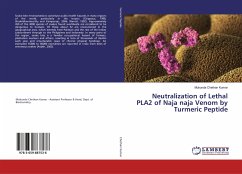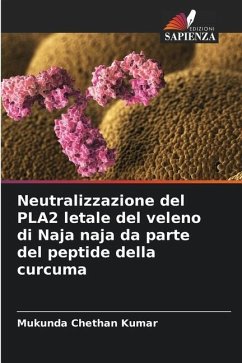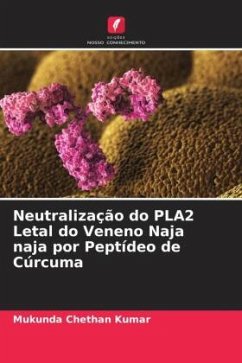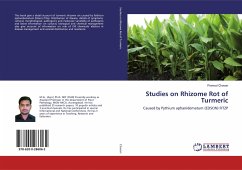
Neutralization of Lethal PLA2 of Naja naja Venom by Turmeric Peptide
Versandkostenfrei!
Versandfertig in 6-10 Tagen
41,99 €
inkl. MwSt.

PAYBACK Punkte
21 °P sammeln!
Snake bite envenomations constitute public health hazards in many regions of the world, particularly in the tropics (Chippaux, 1998; Shashidharamurthy and Kemparaju, 2006; Warrell, 1992). Approximately 450 of the 3000 species of snakes found worldwide are considered to be dangerous to humans. Of these about 52 are encountered in the geographical area, which extends from Pakistan and the rest of the Indian subcontinent through to the Philippines and Indonesia. In many parts of this region, snake bite is a familiar occupational hazard of farmers, plantation workers and others, resulting in tens ...
Snake bite envenomations constitute public health hazards in many regions of the world, particularly in the tropics (Chippaux, 1998; Shashidharamurthy and Kemparaju, 2006; Warrell, 1992). Approximately 450 of the 3000 species of snakes found worldwide are considered to be dangerous to humans. Of these about 52 are encountered in the geographical area, which extends from Pakistan and the rest of the Indian subcontinent through to the Philippines and Indonesia. In many parts of this region, snake bite is a familiar occupational hazard of farmers, plantation workers and others, resulting in tens of thousands of deaths each year and innumerable cases of chronic physical handicap. An estimated 55000 to 60000 mortalities are reported in India from bites of venomous snakes (Avijith, 2003).












